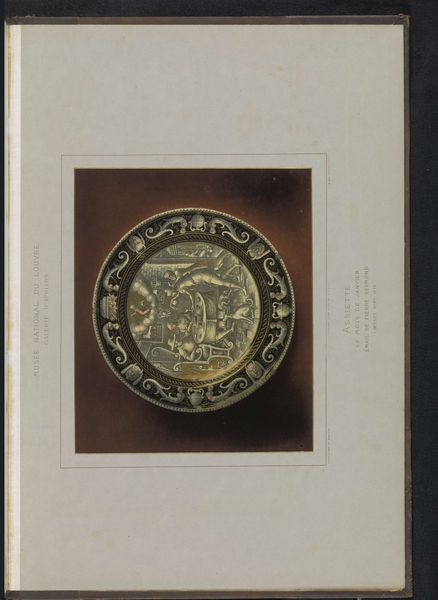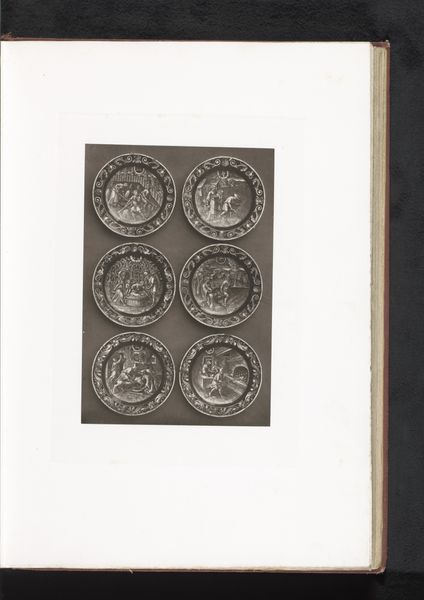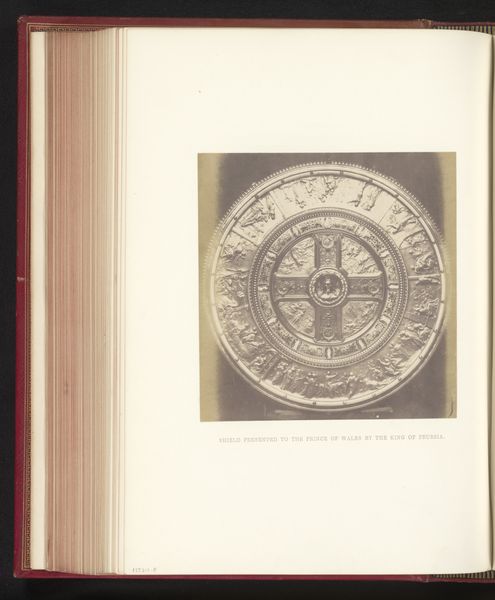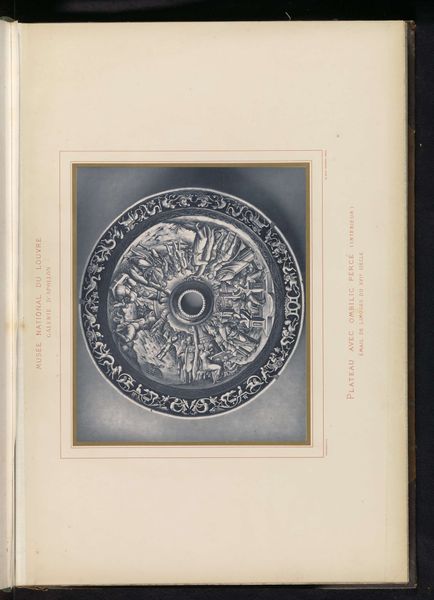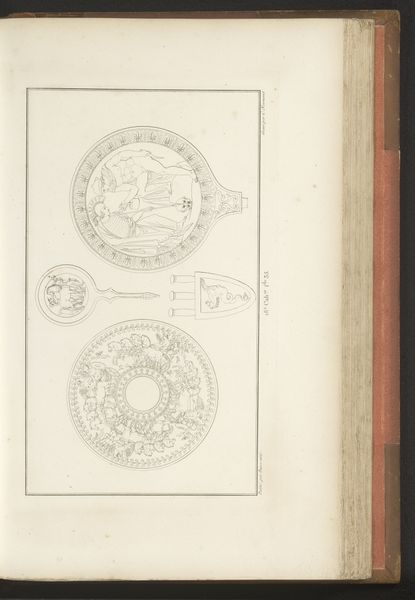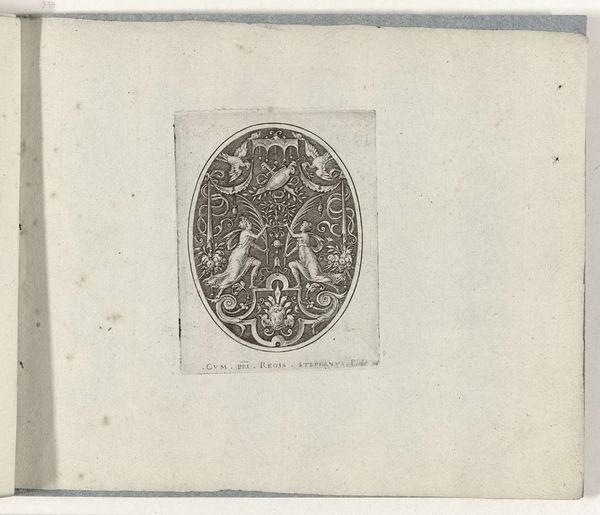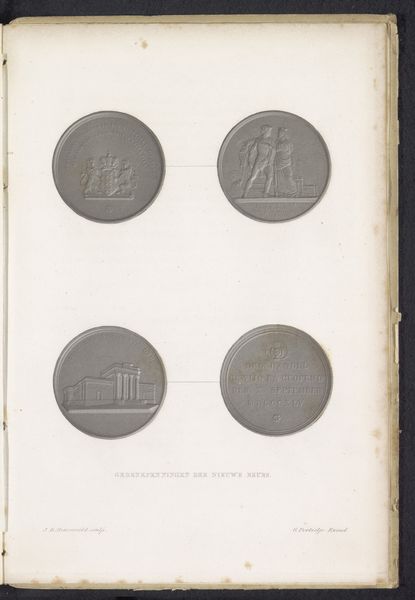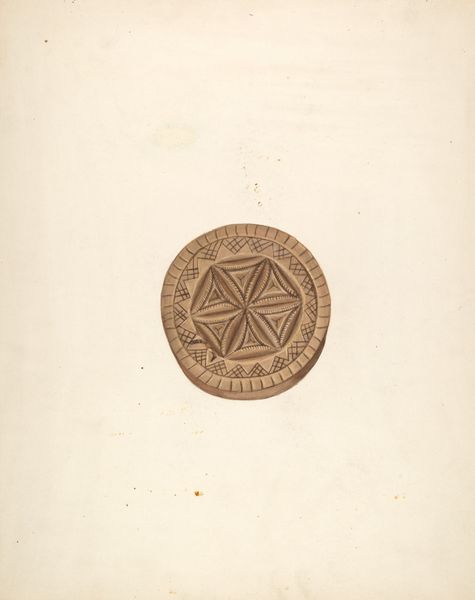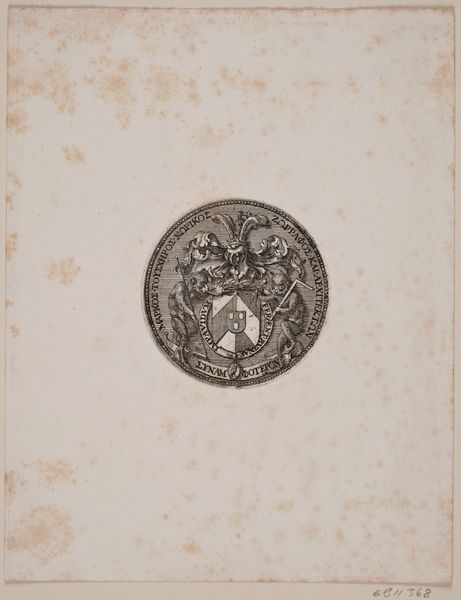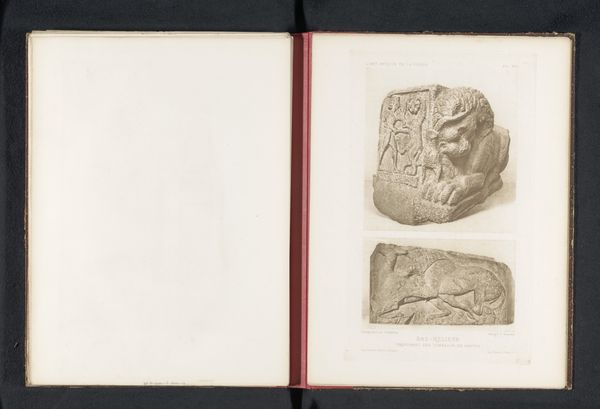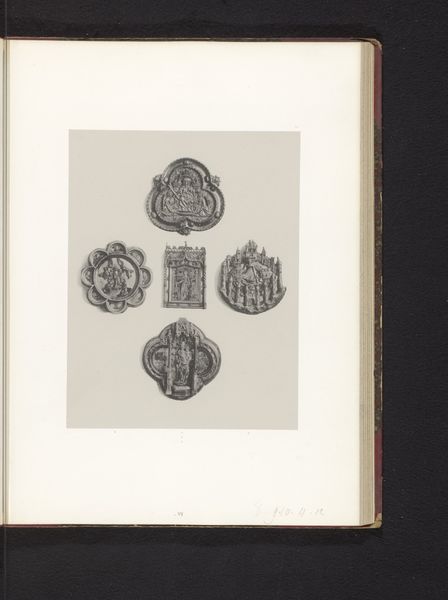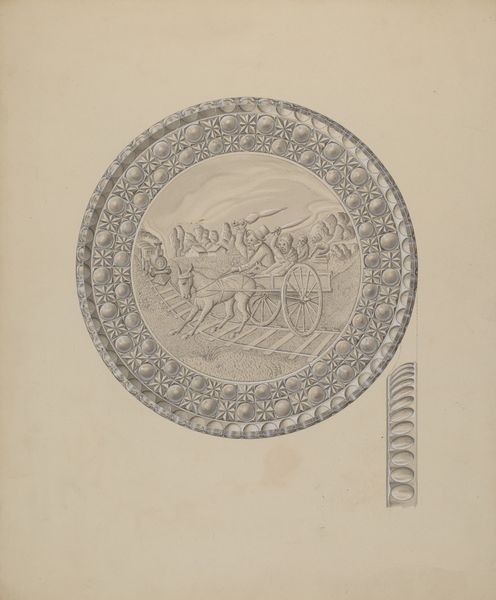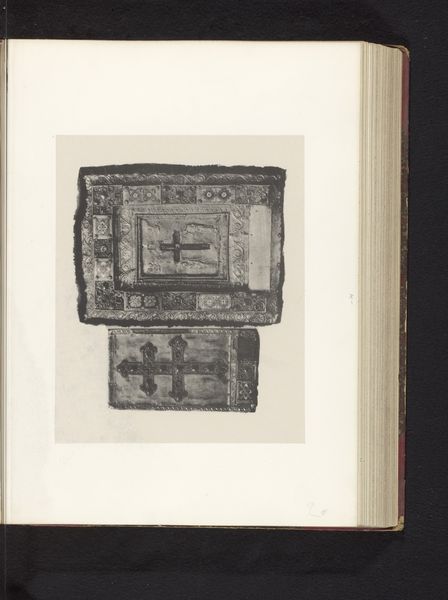
Twee medaillons in het trappenhuis van de Frans I vleugel van het Kasteel van Blois before 1875
0:00
0:00
print, photography, albumen-print
#
portrait
#
medieval
# print
#
photography
#
geometric
#
decorative-art
#
albumen-print
Dimensions: height 244 mm, width 133 mm
Copyright: Rijks Museum: Open Domain
Curator: Here we have a photographic print dating to before 1875 by Médéric Mieusement. The title tells us that it depicts two medallions within the stairwell of the Francis I wing of the Château de Blois. Editor: My first impression is one of crafted authority, wouldn't you agree? There's an aura of meticulous record-keeping surrounding these imprints, but their pale presentation somewhat dulls the originals’ forceful character. I wonder if it was difficult to properly render them, material wise. Curator: I would wager the decision to document the medallions photographically was carefully considered to transmit a certain degree of royal continuity, a desire to record cultural symbols that might otherwise be lost or misinterpreted. The geometric precision reinforces the medallions' intended heraldic message, I imagine, embedding them further into cultural memory. Editor: Precisely. Focusing on materiality, these must have been imposing declarations in stone or bronze, then further replicated in paper by Mieusement. The photographic process of albumen printing involved layering egg whites, imagine the hands and labour involved at the time and the material process required to generate even a single photographic print. The act itself embeds value within each impression. Curator: Consider the symbolism baked into these images. The crowned salamander of Francis I, for instance, speaks volumes of ambition and perceived divine right to rule, it certainly carries its weight with that regalia. And how those lilies persist across French heraldry representing a royal bloodline’s claim. Editor: Yet, we are viewing a reproduction far removed from the original context of political display, raising the question of the power those symbols truly maintain today when we look at this page. Still, each of Mieusement's careful prints played a pivotal role in both documentation and further dissemination of the monarch's symbolic power across France. Curator: A thought-provoking example indeed of how cultural objects are reframed with the passage of time. It reveals that our emotional investment may evolve even as the core symbols persist in our collective consciousness. Editor: Yes, it's a reminder to interrogate not only what these images represent but how their physical creation shaped and reflected societal beliefs during its particular moment of making.
Comments
No comments
Be the first to comment and join the conversation on the ultimate creative platform.
